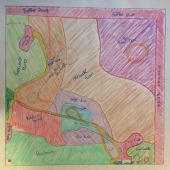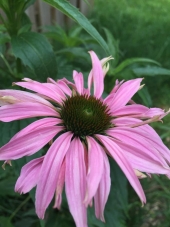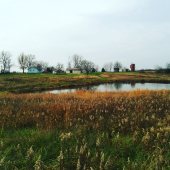Today we are brainstorming on what our future "Wheaton Labs/Ant Village" system might look like. Using this thread
Deep Roots Program for inspiration. We plan to establish some kind of community land share program on our quarter section in Saskatchewan. We are not accepting applications at this time. The purpose of this thread is to generate discussion and add or subtract from the ideas proposed.
The following proposals are all governed by these overruling facts: No Electric, Water or Gas lines will be brought on site. We can kick anyone off the land (with some form of reimbursement for the homesteaders and out-backers). All infrastructure, site locations and advertisement of projects must be approved by us, the land owners. Pets must be friendly and are on trial while they stay with you (cats are on probation) you must clean up after them and manage their waste in a holistic manner. There will be no garbage or recycling pick up like you get in the city; organic waste must be dealt with on-site; non-organic waste must be minimal and taken care of either individually or with help from other tenants. Vehicles must remain on designated pathways and can be parked in the public lot. Healthy trees and snags are to be protected and their removal is subject to permission from the owners. Please don't be a horrible person.
Overruling expectations: You must work to keep the entire quarter section free of non-organic waste like packaging, cigarette butts etc. You will help maintain trails and roadways on-site. You must contribute some labour to a community firewood pile.
Our proposed packages:
Parkland Plots
Cost: Work Trade/ Sweat Equity
Term: One-Two Years
Allowances: Small campsite. No permanent features allowed. Campers and Tents only (Tipis etc). No garbage on site. No hunting or trapping. No earthworks. This is your observation stage.
What you get: Your own temporary campsite, that you select (with approval) and then clear and maintain. You and the other campers are allowed to establish a facilities area (with approval) for your bathing, bathroom and dining/waste cycling activities. These stations would have to be off grid and incorporate resilient/zero waste systems. You have access to the entire site and are invited to work with the owners on their permanent projects (for possible funds or perks). You are encouraged to consider moving into the homestead sites and can actively scout where you want to plant down.
Homestead Holdings
Cost: To be Determined (prices would change based on size of site chosen)
Term: One - Five Years
Allowances: 1/4, 1/2, or full acre. Infrastructure must be temporary (movable, adaptable, small). You must maintain your plot and all infrastructure you place on it. You are allowed to mark out your boundary with fencing (must be approved). Maximum building size (no minimum). Access to community pasture (2 acres) for your goat, pig, small cow, horse etc. You can keep small livestock (chickens, ducks, rabbits) on your plot. Owners are allowed to view your site with no notice. Trapping of small animals allowed. Some earthworks allowed.
What you get: A place to experiment with alternative building methods (cordwood, tiny-house, wofati, strawbale etc.). A place to test out your homesteading skills (food production, animal husbandry, woodland management). This program would again focus on community with you and your fellow homesteaders erecting a new community centre (keeping in mind the centre you established in the parkland, improvements and upgrades you would incorporate) for your bathing, dining and waste management. You have the opportunity to work together in the community pasture, establish a market garden and other systems to bring in income.
Outback Acres
Cost: To be Determined
Term: Five years and beyond
Allowances: Five acres for you to improve. Permanent structure allowed (maximum size, no minimum). Ideally you will be self-sustaining. This area would be accessible to you and the owners (24 hr notice). Hunting and Trapping allowed (quantities approved by land owners)
What you get: A place to build your permaculture oasis. More private than the Parkland Plots. You are invited to improve your parcel with earth works, gardens, animals, woodlot management etc. You can rent space on "Rotation Range" to establish holistic animal management practices. Continue to build community ties.
















